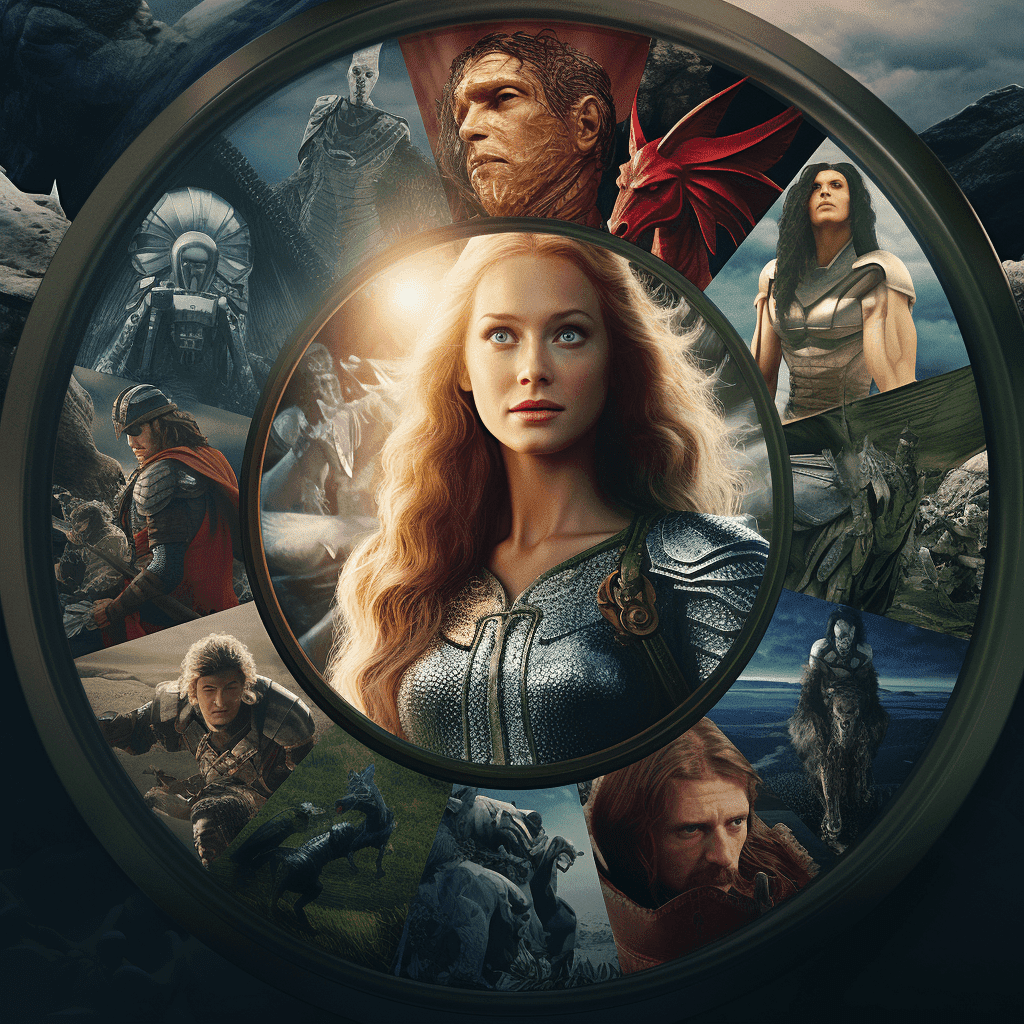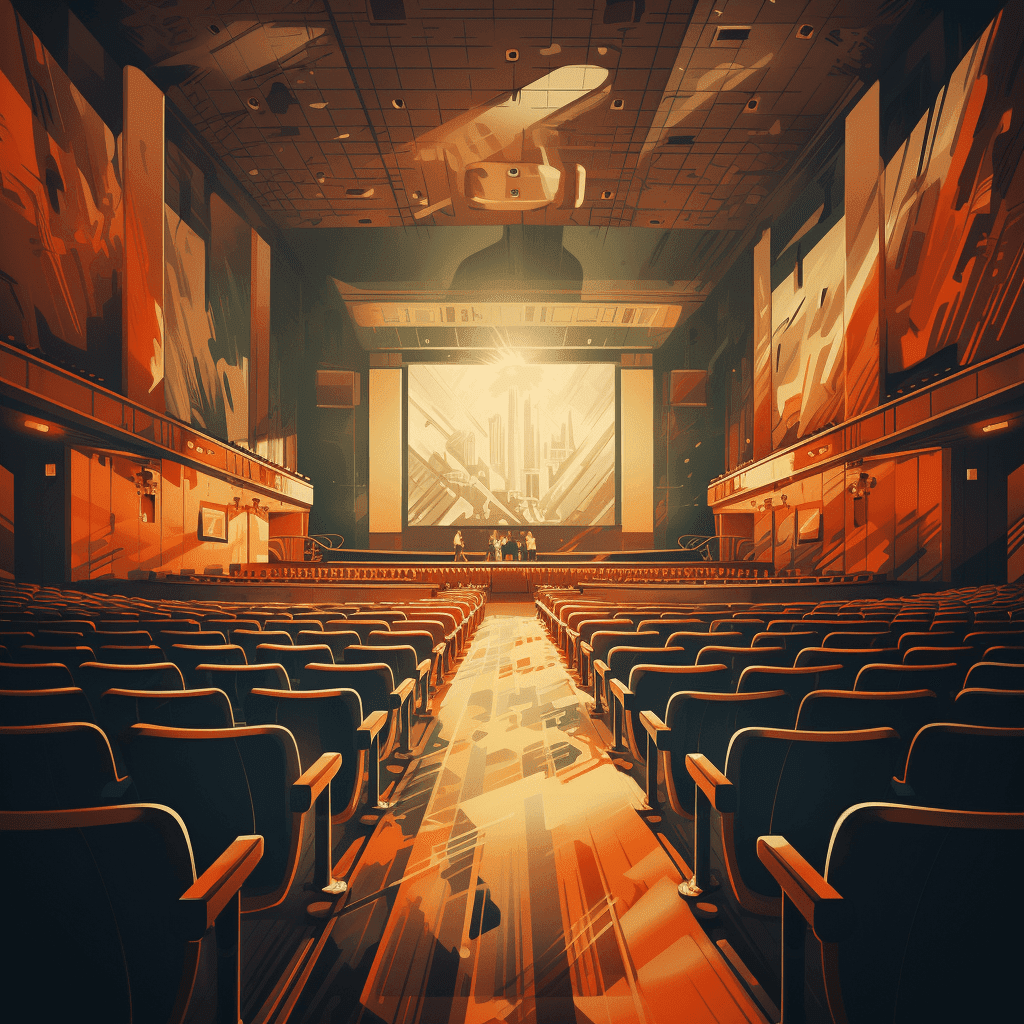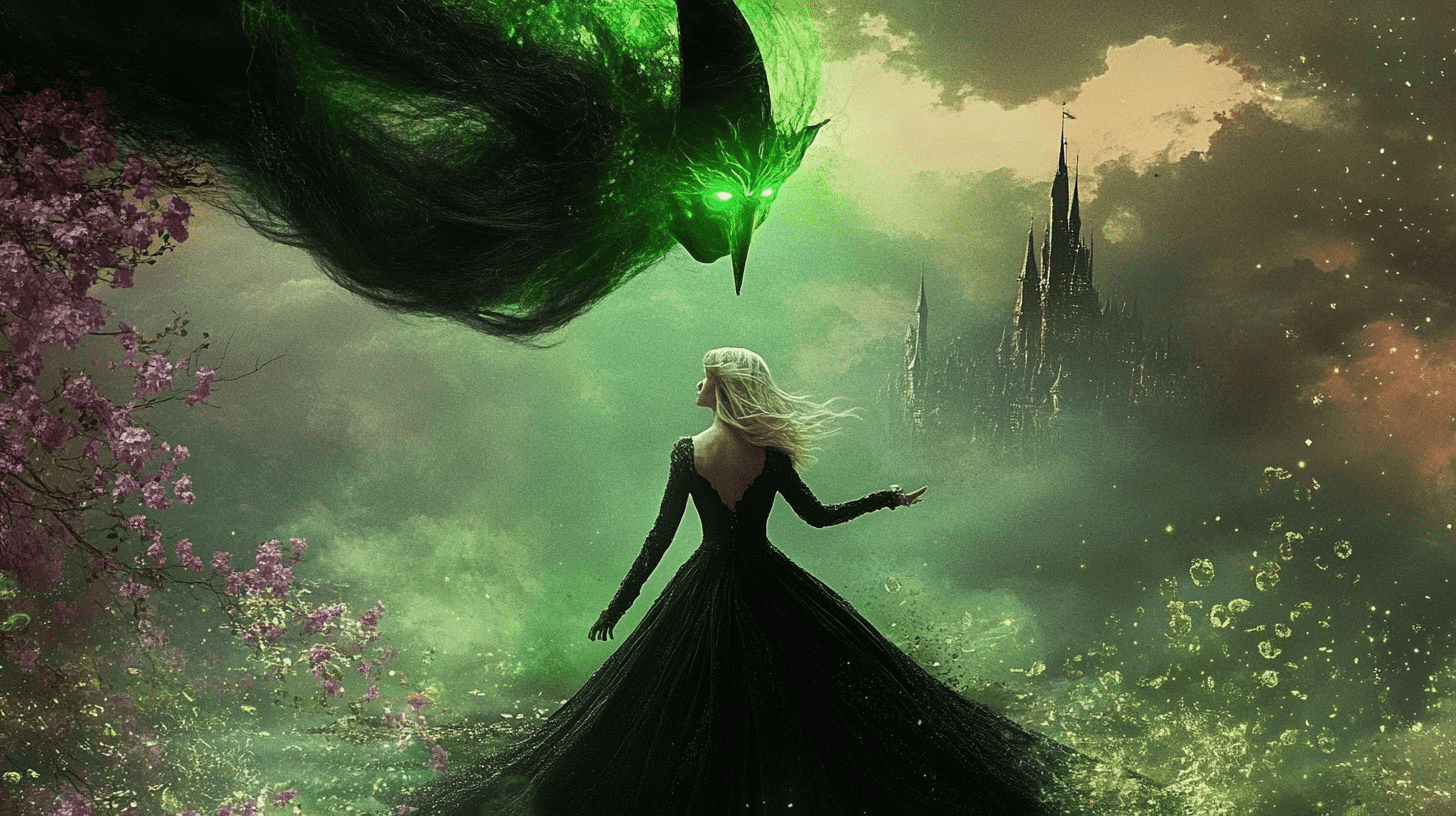Ad Blocker Detected
We use ads to keep this site running, so please consider disabling your ad blocker. Thank you!
Do not know how to disable ad blocker? Check out this article: How to disable ad blocker?
What's After the Blog?
Cinema • Criticism
The Unseen Art: The Importance of Film Editing
Discover the transformative power of film editing and its pivotal role in cinematic storytelling in our in-depth exploration of this often unseen art.
May 21, 2024

Movies mentioned in this article
The Unseen Art: The Importance of Film Editing
Introduction
Film editing, often referred to as the invisible art, plays a pivotal role in the creation of cinematic masterpieces, yet it remains one of the least recognized elements of filmmaking. This art form is not just about cutting and splicing footage; it’s about rhythm, pace, narrative flow, and the subtle manipulation of audience emotions. Through skilled editing, a film can be transformed from a series of disjointed shots into a coherent, emotionally engaging narrative. At What’s After the Movie (ATM), we not only provide information on whether your favorite film has end credit scenes but also delve into the intricate world of film production, including the vital role of editing.
The impact of editing can be seen in films like The Godfather where the careful juxtaposition of scenes creates a narrative tension, or in Pulp Fiction where non-linear editing forms a unique storytelling experience. Editing is the backbone of film narrative, often working subtly in the background, guiding the viewer’s emotional response without their conscious awareness. It is in the editing room that the final shape of the film comes together, where scenes are arranged to ensure continuity, create rhythm, and develop the narrative arc of the story.
The Role of Editing in Storytelling
Editing is much more than the technical aspect of cutting and joining different shots. It’s a creative process that involves choosing the right takes, determining the length of each shot, and deciding the sequence in which they appear. The editor, in collaboration with the director, is responsible for the film’s pacing, continuity, and narrative structure. They control the viewer’s focus, subtly guiding them through the story, deciding what they see, when they see it, and for how long.
For instance, in The Godfather, the baptism scene is a classic example of cross-cutting, a technique where two or more scenes are intercut to establish a connection. As the baptism of Michael Corleone’s godson takes place, simultaneous assassinations ordered by Michael unfold. This juxtaposition heightens the dramatic tension and underscores the duality of Michael’s character. Similarly, in Whiplash, the frenetic editing mirrors the protagonist’s mental state and the intensity of his drumming, creating a visceral experience for the audience.
In action films like Mad Max: Fury Road, editing is crucial in choreographing action sequences, where rapid cuts and varied camera angles create a sense of urgency and excitement. On the other hand, in a dialogue-heavy drama like 12 Angry Men, editing is more restrained, allowing the actors’ performances and the script’s tension to take center stage.
Through these examples, it’s evident that editing is an art form that goes beyond mere technical skill. It’s a crucial storytelling tool, integral in shaping the film’s narrative, rhythm, and emotional impact. An editor’s choices can dramatically alter the viewer’s understanding and enjoyment of a film, making editing not just a post-production process, but a core element of filmmaking itself.
Historical Evolution of Film Editing
The history of film editing is as rich and varied as cinema itself, tracing back to the early days of motion pictures. In the beginning, editing was rudimentary, primarily used to string together a sequence of scenes. However, as cinema evolved, so did the art of editing. Early filmmakers like Georges Méliès and D.W. Griffith were pioneers, experimenting with basic editing techniques to tell more complex stories. Méliès’ A Trip to the Moon is an early example of using edits to create special effects and narrative continuity.
The introduction of the Moviola in the 1920s revolutionized film editing. This device allowed editors to view footage more easily, making the editing process faster and more precise. The golden age of Hollywood in the 1930s and 1940s saw the rise of continuity editing, a style that emphasized smooth, seamless transitions to maintain the illusion of reality. Films like Gone with the Wind and Casablanca are classic examples of this style.
The late 20th century brought about the digital revolution, fundamentally changing the way films were edited. Digital editing software like Adobe Premiere and Final Cut Pro provided editors with unprecedented control and flexibility. This era saw a shift towards more dynamic and stylistically diverse editing. For instance, the fast-paced, jump-cut style of The Bourne Ultimatum contrasts sharply with the slow, contemplative pacing of Lost in Translation, showcasing the wide range of storytelling possibilities afforded by modern editing techniques.
”What does a film editor do?”
A film editor’s role is multifaceted and integral to the filmmaking process. They are storytellers, rhythm makers, and unsung heroes who shape the raw footage into a coherent and compelling narrative. An editor works closely with the director to realize their vision, often becoming a film’s unsung hero. They sift through hours of footage, selecting the best shots and arranging them in a way that best tells the story. Their decisions about what to keep, what to cut, and how to transition from one scene to the next greatly influence the film’s pacing, mood, and narrative structure.
Editors must have a keen eye for detail, a deep understanding of narrative, and an intuitive sense of timing and rhythm. They often have to make tough decisions about what to cut, balancing the director’s vision with the realities of the film’s length and pace. Thelma Schoonmaker, long-time collaborator with Martin Scorsese, exemplifies this balance. Her work on films like Raging Bull and The Departed showcases her ability to craft complex narratives and manage the rhythm and pace to enhance the film’s emotional impact.
The relationship between a director and editor is often one of the most crucial in the filmmaking process. A good editor can elevate a film, bringing clarity and coherence to the director’s vision. In many ways, the editor shapes the final product as much as the director, making their role in filmmaking both essential and powerful.
The Techniques and Tools of Editing
Film editing is not just about cutting and splicing; it’s an art that involves a multitude of techniques and tools, each chosen to enhance the narrative and emotional impact of a film. Among the most notable techniques are the montage, cross-cutting, match cuts, and jump cuts. A montage, used effectively in films like Rocky, serves to compress time and convey a lot of information quickly. Cross-cutting, as seen in The Godfather, is used to build suspense by cutting between two different scenes happening simultaneously. Match cuts, like the iconic bone-to-spaceship transition in 2001: A Space Odyssey, offer a visual or thematic link between two disparate scenes. Jump cuts, which create a jarring effect, can be seen in films like Breathless, highlighting the disorientation or turmoil of characters.
Modern editing tools have revolutionized the editing process. Software like Adobe Premiere Pro, Final Cut Pro, and Avid Media Composer allows editors to work with digital footage, providing a plethora of options for manipulating and enhancing the visuals. These tools offer features like color correction, special effects, and the ability to edit non-linearly, meaning editors can work on any part of the film at any time, rather than having to edit in sequence. This flexibility has opened up new creative possibilities, allowing editors to experiment and find the best way to tell the story.
The Psychological Impact of Editing on Audiences
The way a film is edited can have a profound psychological impact on its audience. Editing techniques are used to manipulate time and space, create mood, and influence the viewer’s emotional response. A well-edited film can make audiences feel tension, suspense, excitement, or relief without them being consciously aware of the editor’s influence. For example, the rapid editing in action films like Mad Max: Fury Road can create a sense of urgency and adrenaline, while the longer takes and slower pacing in Manchester by the Sea allow audiences to deeply connect with the characters’ emotions.
In films like Inception, editing plays a crucial role in shaping the audience’s understanding of the complex narrative, guiding them through the different layers of the story. Similarly, in Whiplash, the editing enhances the intensity of the music and the protagonist’s psychological journey, creating a gripping and emotionally charged viewing experience.
Through editing, filmmakers have the power to control the viewer’s perception and emotional journey, making it one of the most potent tools in the cinematic arsenal. A film’s editing can make the difference between a good movie and a great one, profoundly affecting how audiences experience and remember the story.
Critics and Audiences: The Mixed Reception of 3D
Despite the technological advancements and the unique experiences that 3D movies offer, they have received a mixed reception from both critics and audiences. While some praise the added depth and immersion that 3D brings to cinema, others criticize it for various reasons, including the discomfort caused by 3D glasses, the dimming of the picture caused by the 3D effect, and the perception that it is often used more as a marketing tool than as an artistic one.
From the critics’ perspective, the use of 3D is often seen as a double-edged sword. On one hand, movies like Life of Pi and Avatar have been lauded for their innovative and effective use of 3D, which adds to the storytelling and visual splendor of the films. On the other hand, there have been instances where 3D is perceived as an afterthought or a gimmick, added to movies without significant enhancement to the narrative or visual experience. Films that undergo post-production 3D conversion, rather than being shot in 3D, often face criticism for lower quality and less immersive 3D effects.
Audience reception of 3D movies also varies. While some movie-goers actively seek out the 3D versions of films for a more immersive experience, others prefer the traditional 2D format, citing discomfort or a lack of substantial difference to justify the added cost of 3D movie tickets. The preference for 3D can also depend on the genre of the movie; action and fantasy films tend to be more popular in 3D, while dramas and comedies may not benefit as much from the format.
This mixed reception reflects the challenges and opportunities of 3D cinema. While 3D has the potential to enhance the cinematic experience significantly, its success depends on how well it is integrated into the filmmaking process and whether it adds value to the storytelling and visual expression of the film.
”Is 3D Here to Stay, or Is It Just a Passing Trend?”
The question of whether 3D is a permanent fixture in cinema or merely a passing trend is a topic of much debate. While the initial surge in popularity of 3D movies following the release of Avatar suggested a new era for cinema, the subsequent years have seen a fluctuation in the production and reception of 3D films. Factors influencing this include the quality of 3D experiences, audience preferences, and the evolving landscape of entertainment technology.
On the one hand, high-quality 3D films that effectively use the technology to enhance storytelling continue to achieve critical and commercial success. These successes suggest that there is a place for 3D in cinema, particularly in genres that benefit from the added depth and immersion, such as action, fantasy, and animation. On the other hand, the novelty of 3D has worn off for some viewers, and the additional cost of 3D movie tickets is a deterrent for others. This has led to a more selective audience for 3D films, with movie-goers choosing 3D experiences for particular films where the technology adds significant value.
Moreover, the rise of alternative technologies like virtual reality (VR) and augmented reality (AR) has introduced new ways for audiences to experience immersive storytelling. While these technologies are different from 3D cinema, their emergence has contributed to the broader conversation about how audiences want to experience visual media. As VR and AR continue to develop, they may offer experiences that compete with or even surpass traditional 3D cinema.
In conclusion, while 3D may not dominate the film industry as it once seemed it might, it remains an important and viable option for filmmakers looking to create immersive and visually captivating movies. The future of 3D in cinema will likely be characterized by a focus on quality over quantity, with 3D being used when it genuinely enhances the film experience.
Critics and Audiences: The Critical Role of Film Editing
Film editing, often underappreciated and overlooked, plays a crucial role in shaping a film’s narrative, rhythm, and emotional resonance, yet it garners mixed reactions from critics and audiences. Critics, well-versed in the nuances of filmmaking, tend to appreciate the editor’s art, recognizing how a well-edited film can enhance storytelling, build suspense, and develop characters. They laud films like Whiplash and The Social Network for their meticulous editing, which contributes significantly to the narrative’s tension and pacing.
Audiences, while generally less aware of the editing process, are subconsciously influenced by it. A film that is expertly edited, like Mad Max: Fury Road, provides a seamless viewing experience, keeping viewers engaged and immersed in the story. Conversely, poor editing can lead to a disjointed and confusing film, which can detract from the viewer’s enjoyment. This dichotomy shows that while editing might be an invisible art, its impact on the overall film experience is profound and far-reaching.
”Why is Editing Considered an Invisible Art?”
Film editing is often dubbed an invisible art because when done well, it goes unnoticed by the audience. The editor’s job is to create a seamless narrative flow, ensuring that the film’s pacing, story development, and emotional beats resonate with the viewer without drawing attention to the editing itself. Films like Birdman illustrate this concept beautifully, with its seemingly continuous shot creating an immersive experience that blurs the lines between individual scenes.
This invisibility is a testament to the editor’s skill. A great edit is one that the audience feels rather than sees. When viewers are deeply engrossed in a film, they’re not thinking about how it’s edited; they’re simply experiencing the story. This is the ultimate goal of editing: to serve the story in a way that feels natural and unobtrusive. It’s a delicate balance of art and craft, requiring a deep understanding of storytelling, pacing, and the emotional language of cinema.
The Recognition and Awards for Film Editing
The importance of film editing in the cinematic world is underscored by the recognition it receives through prestigious awards. The Academy Award for Best Editing is one such accolade that highlights the editor’s critical contribution to filmmaking. This award not only acknowledges the technical skill involved in editing but also the editor’s role in shaping the narrative, pace, and overall effectiveness of a film. Notable winners of this award include Thelma Schoonmaker for her work on The Departed, and Lee Smith for Dunkirk, each demonstrating mastery in crafting compelling narratives through their editing choices.
The recognition of film editing extends beyond the Oscars, with other significant awards like the BAFTA Award for Best Editing and the American Cinema Editors’ Eddie Awards. These awards celebrate the art of editing across various genres and formats, from blockbuster movies to independent films and documentaries. The recognition bestowed by these awards plays a vital role in elevating the status of film editors, bringing attention to the often-overlooked art of editing and its essential role in the filmmaking process.
Editing in Different Genres
The role and style of editing vary significantly across different film genres, each presenting unique challenges and requiring distinct approaches. In action movies, like Mad Max: Fury Road, editing is central to creating intense, fast-paced sequences that keep the audience on the edge of their seats. Rapid cuts, dynamic transitions, and meticulous timing are employed to convey the energy and urgency of the action.
Conversely, in drama films such as Manchester by the Sea, the editing is often more subtle, focusing on character development and narrative depth. Here, longer takes and a slower pace allow the audience to immerse themselves in the characters’ emotional journeys, fostering a deeper connection to the story.
In comedies, like The Grand Budapest Hotel, editing contributes to the timing of jokes and comedic scenes. Precise cuts and visual gags are crucial in landing the humor and maintaining the film’s rhythm. Meanwhile, horror films like Hereditary use editing to build suspense and shock the audience, often employing sudden cuts or lingering shots to create a sense of unease.
Each genre leverages editing in unique ways to achieve its specific storytelling goals, showcasing the versatility and creative potential of the editor’s craft. Understanding these nuances allows viewers to appreciate the complexity and artistry behind film editing and its impact on the cinematic experience.
Continue reading

What's After the Movie?
Not sure whether to stay after the credits? Find out!
Check out our other apps:
Actors
Companies
Latest Movies
© 2025 What's After the Movie. All rights reserved.



























